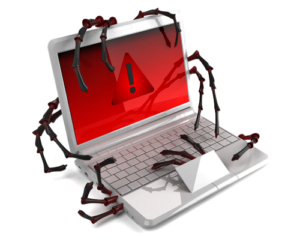WordPress powers 43% of all websites on the internet, making it the world’s most popular content management system. This widespread adoption brings a significant challenge: WordPress sites have become prime targets for malware attacks.
Your WordPress site faces constant threats from cybercriminals looking to exploit vulnerabilities. These attacks can lead to:
- Data theft and unauthorized access
- Spam content injection
- Complete site takeover
- Financial losses
- Damaged reputation
A malware infection can cripple your online presence within hours, affecting your business operations and user trust. The good news? You can protect your WordPress site with the right knowledge and tools.
This guide walks you through the essential steps of WordPress malware removal. You’ll learn how to identify infection signs, remove malicious code, and implement robust security measures to prevent future attacks. Whether you’re a site owner, developer, or WordPress administrator, you’ll find actionable insights to keep your website secure and malware-free.

Understanding WordPress Malware
WordPress malware comes in various forms, each designed to exploit specific vulnerabilities in your website’s infrastructure. The most common entry points for malicious code are:
- Outdated Software: Unpatched WordPress core files, themes, and plugins create security gaps
- Nulled Themes/Plugins: Free versions of premium products often contain hidden malware
- Weak Passwords: Easy-to-guess credentials give attackers direct access to your site
- Vulnerable Hosting: Shared hosting environments can spread infections between sites
When malware infiltrates your WordPress site, it can cause severe damage:
- Delete critical files and database entries
- Insert spam links and unwanted advertisements
- Steal sensitive user data and payment information
- Create backdoors for future attacks
- Redirect visitors to malicious websites
Manual WordPress Malware Removal Process
Removing malware manually requires careful attention to detail and a systematic approach. Here’s a comprehensive guide to clean your infected WordPress site:
Essential Preparation Steps
- Enable maintenance mode to prevent visitor access
- Create a complete backup of your site files and database
- Download a fresh copy of WordPress core files
- Gather FTP credentials and database access information
Cleaning Infected Files
- Scan your wp-config.php file for suspicious code
- Replace core WordPress files with clean versions
- Review
Delete any unfamiliar PHP files in your root directory
Database Cleanup Process
- Export your database for backup
- Search for spam links in posts and comments
- Remove unauthorized admin accounts
- Check for suspicious entries in wp_options table
- Delete any unknown database tables
- Scan for encoded malicious content
Post-Cleanup Security Steps
- Change all WordPress passwords
- Update database prefix
- Reset all API keys
- Install fresh copies of trusted themes and plugins
- Verify file permissions (folders: 755, files: 644)
- Run a malware scan to confirm removal
Critical Areas to Check
- Header.php files in active themes
- Index.php files across all directories
- Upload folders for hidden malware
- Plugin directories for modified files
- Scheduled tasks in wp-cron
- User roles and capabilities

Automated Malware Removal Tools for WordPress
Security plugins offer a hassle-free approach to protecting your WordPress site from malware threats. These tools provide automated scanning, detection, and removal capabilities without requiring technical expertise.
Popular WordPress Security Plugins:
- Wordfence Security: Real-time threat defense system, advanced firewall protection, live traffic monitoring, malware signature detection
- Jetpack Scan: Daily automated security scans, one-click threat resolution, instant email notifications, integrated backup solutions
- Sucuri Security: Website firewall protection, malware removal capabilities, security activity auditing, blacklist monitoring
Conclusion
Protecting your WordPress site from malware requires a proactive security approach. Regular backups serve as your safety net against potential attacks, while staying informed about emerging security threats helps you adapt your defenses.
Here’s your WordPress security checklist:
- Create automated daily backups
- Subscribe to WordPress security newsletters
- Join relevant security forums
- Monitor security blogs for latest threats
- Test your backups regularly
Remember: A secure WordPress site needs constant attention. The strategies shared in this guide give you the tools to detect, remove, and prevent malware infections. Your website’s security is an ongoing journey – start implementing these protective measures today.

